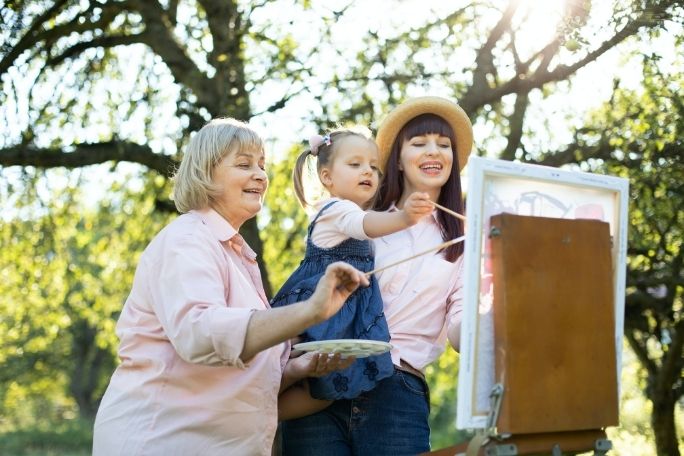Lesson summary
Sometimes when you’re stressed or upset, it can be great to go and sit in a special place in nature that helps you relax. Do you have a place like this? Somewhere in your backyard, under a tree or near some beautiful flowers? Think about how it feels to just sit there and watch the world go by.
Your challenge today is to capture this special place in a work of art! Then you can hang it on your wall and enjoy the feeling it brings whenever you’re stuck inside.
Lesson guides and printables
Lesson details
Curriculum mapping
Curriculum codes:
- Year 3: ACHASSK069
- Year 4: ACHASSK088
- Year 3 and 4: ACAVAM110, ACAVAM111
Time required: 45 minutes
Curriculum connections: Visual Arts, Geography, Critical and Creative Thinking
Resources required
- Art supplies: coloured pencils, pens, paint, coloured paper, glue, scissors
- White paper
Tips for parents and carers
This activity encourages children to take notice of the world around them.
Photographs or internet searches of holiday destinations can be useful in providing stimulus for children who are determined to get their drawing ‘right’, but remind them it’s about what they remember and how the special place makes them feel. Encourage your child to be creative and take risks in their art.
This activity can be a useful gateway to discussing with your children whether they’re feeling safe at school and at home, and to come up with some strategies such as meditating and calm breathing when they are feeling stressed and overwhelmed.
Additional info
Learning@Home resources are designed for parents and teachers to use with children in the home environment. They can be used as stand-alone activities or built into existing curriculum-aligned learning programs. Our Learning@Home series includes two types of resources. The first are fun and challenging real-world activities for all ages, the second are self-directed lessons for upper primary and secondary students. These lessons support independent learning in remote or school settings.


Welcome back!
Don't have an account yet?
Log in with:
By signing up to Cool.org you consent and agree to Cool's privacy policy to
store, manage and process your personal information. To read more, please see
our privacy policy here(Opens in new tab).
Create your free Cool.org account.
Many of our resources are free, with an option to upgrade to Cool+ for premium content.
Already have an account?
Sign up with:
By signing up to Cool.org you consent and agree to Cool's privacy policy to
store, manage and process your personal information. To read more, please see
our privacy policy here(Opens in new tab).